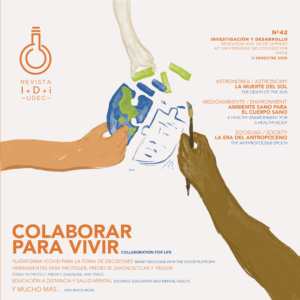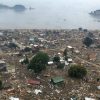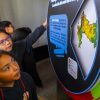The Concepción Campus of our University surprises with its plant diversity. Ancient sequoias, elusive pujas, and magnolias that, every September, illuminate the landscape with their flowering, cohabit its trails. The greenery of the campus, its lagoon, and its swans invite us to reflect on our relationship with nature. This connection was born at the origins of humanity, and today we have a better understanding thanks to science and technology.
This space is a living heritage, a refuge for species threatened by urbanization. Its value increases in times when the balance with the ecosystem is fragile. Innovation thus becomes a necessary bridge: through creativity and knowledge, we can face pollution, overexploitation, biodiversity loss, and climate change.
In this issue of R+D+i UdeC, we explore the link between natural heritage, research, and innovation. We will learn about the efforts to conserve and restore native forests in the face of the mega drought. We will review the collaboration between the University of Concepción and the company, CMPC, that gave rise to Gesfire, a platform that centralizes critical information for rapid decision-making in the face of forest fires. And we will see how coastal ecosystems act as natural barriers against tsunamis.
We will see how to optimize the production of cellulose nanofibers with different uses, exploring applications that could have an impact on the market, and also how waste from cellulose plants could be used to generate sustainable concrete and cement. We will also find out how UdeC’s Nature Campus (Campus Naturaleza) took the first step towards its Botanical Garden, formalizing its first ex situ collection with ruil, hualo, and Santiago oak, thus safeguarding the genetic diversity of key species of the Chilean forest.
From Patagonia, we learn about the Caleta Tortel Environmental Interpretation Center, a non-traditional museum adapted by the COPAS Coastal Center that unites science, territory, art, and memory. And, in the field of biodiversity, we celebrate the rediscovery of the Nothojafnea thaxteri fungus on the Nature Campus, which reminds us that there are still scientific treasures to be discovered and protected.
The University of Concepción is a hotbed of ideas, fueled by the work of its researchers. We invite you to explore these pages, where nature and innovation meet to project a sustainable, equitable, and resilient future.
Dr. Ronald Mennickent Cid
Director of Research and Artistic Creation
Vice-Rector’s Office for Research and Development
University of Concepción






